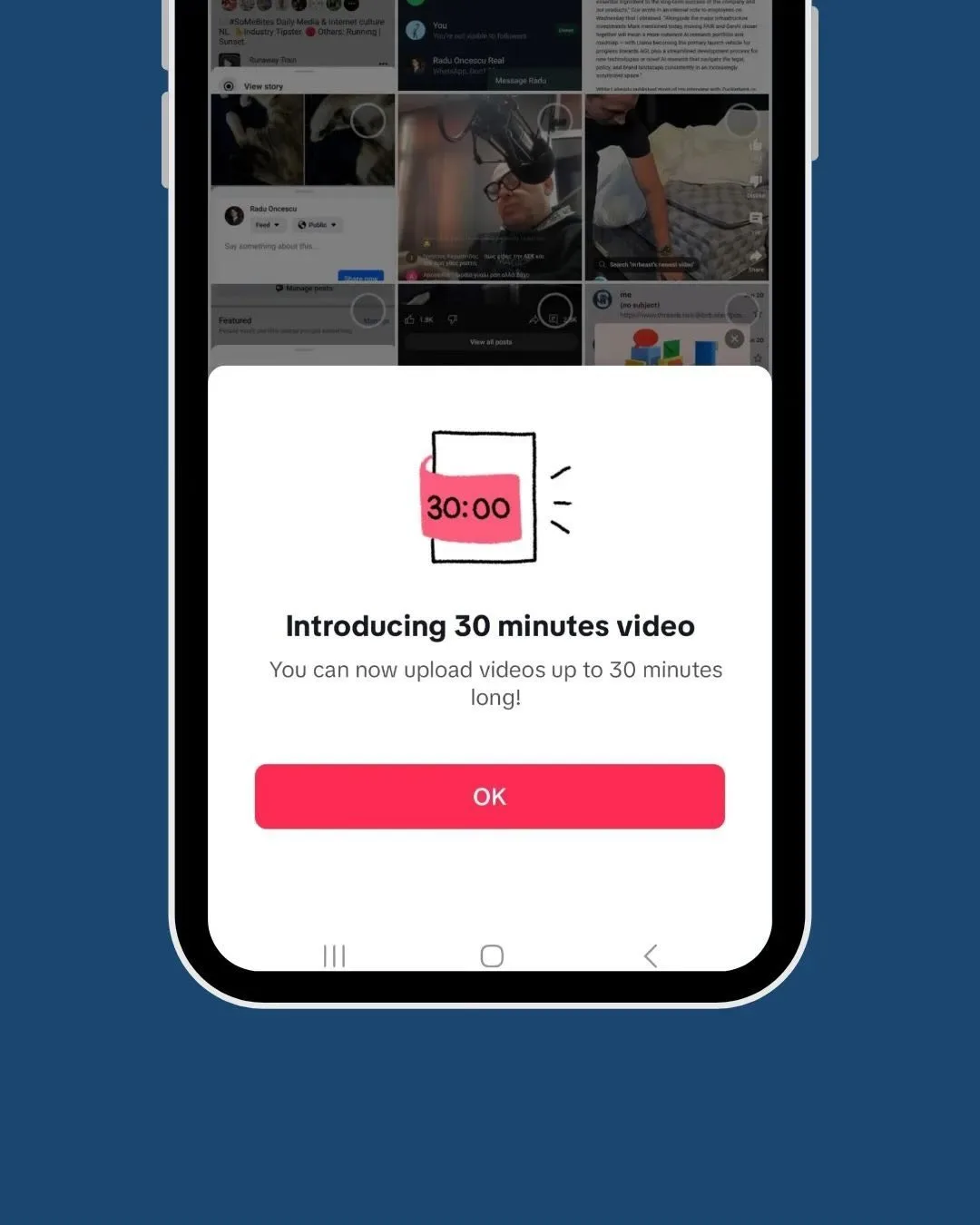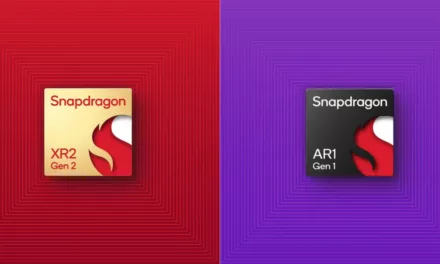
TikTok Tests 30-Minute Video Uploads

TikTok is launching a 30-minute video upload feature, marking a significant move into YouTube’s video platform market. This marks a departure from its original 15-second video format and underscores TikTok’s strategic shift towards embracing longer-form content.
Social media consultant Matt Navarra discovered the new feature in the iOS beta version of the app, with reports suggesting its presence in the Android beta version. Over the years, TikTok has expanded its video time limits. The platform started from 15 seconds and moved to one minute, three minutes, 10 minutes, and recently, a 15-minute limit.

This move intensifies TikTok’s competition with YouTube. It signals an intent to attract creators who traditionally post longer content on the video giant. The platform’s evolution has transitioned from primarily short-form content to embracing longer videos, blurring the lines between TikTok and YouTube.
Impact on Content Creation
The 30-minute upload limit allows creators to share extensive tutorials, educational content, cooking recipes, and TV episodes. This move could attract networks, as demonstrated by Peacock, which previously broke up an episode into multiple parts but could now upload entire episodes seamlessly on TikTok.
However, the longer video format may face resistance from viewers accustomed to quick, short videos on TikTok. The platform’s expansion into longer videos has sparked discussions about the impact on the platform due to concerns about attention spans.
In response to potential viewer concerns, TikTok has tested a horizontal full-screen mode. Moreover, they have introduced a feature allowing users to fast-forward videos. These initiatives reflect TikTok’s awareness of the diverse preferences within its user base.
Monetization Opportunities
While the 30-minute upload option is still in testing, it could present a significant opportunity for TikTok creators. The extended duration may facilitate better monetization through pre and mid-roll ads. This addresses a key challenge the platform faces in providing effective revenue-sharing options for creators.
TikTok’s 30-minute upload testing reveals its goal to become a primary destination for diverse content, challenging YouTube’s dominance in the longer-form video space. The platform’s journey from short-form to extended content signifies its adaptability and determination to cater to the evolving needs of its user base.













